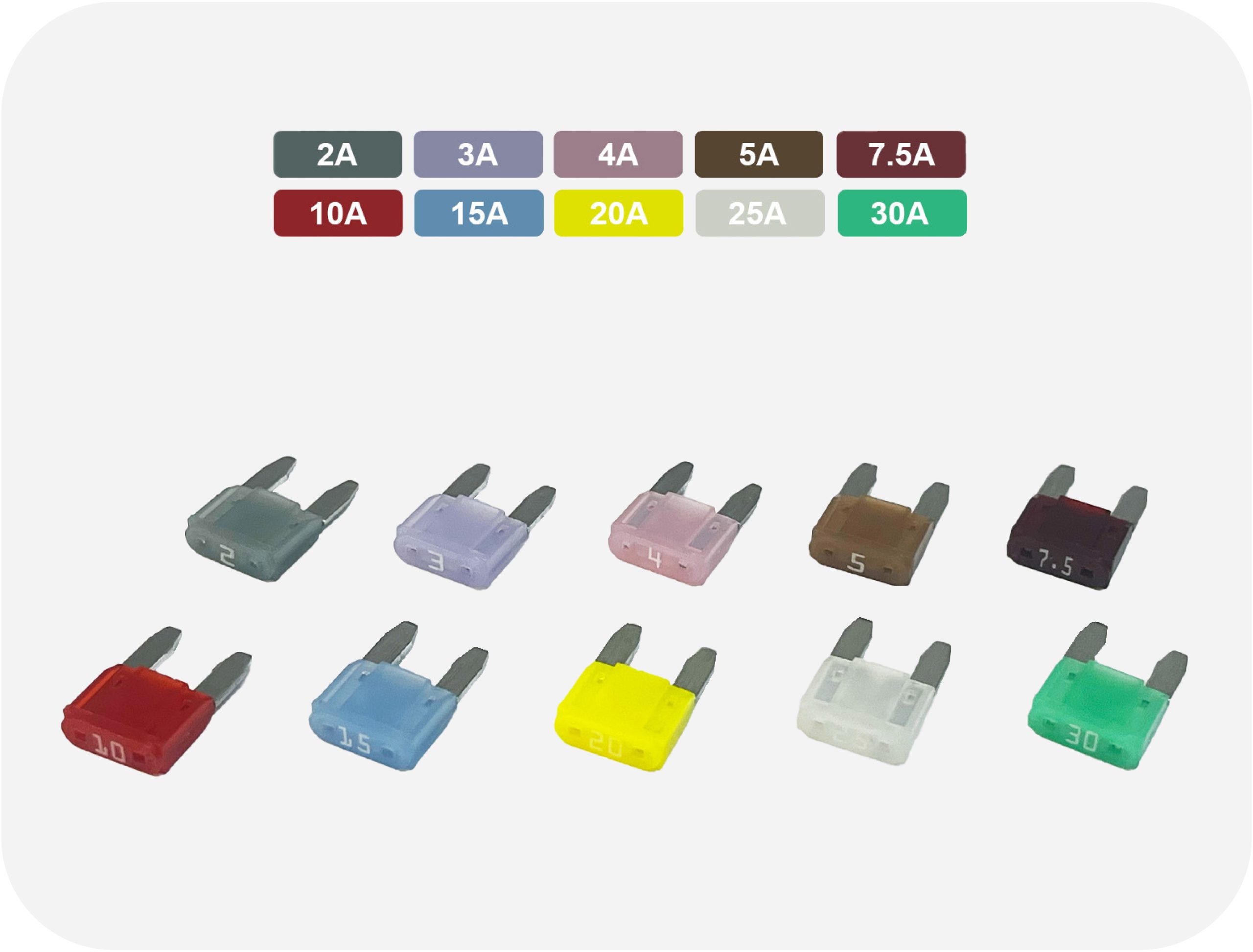How to Choose the Right Amp Fuse for Your Electrical System

When it comes to protecting your electrical system, selecting the correct amp fuse is one of the most important decisions you can make. Fuses help prevent damage to components, wiring, and even people by breaking the circuit when too much current flows. But how do you choose the right fuse for your needs?
Follow these three key steps to select the perfect amp fuse based on current ratings, overcurrent protection, and ambient temperature factors.
Step 1: Know the Circuit’s Current Rating
Before selecting an amp fuse, it’s crucial to understand your circuit’s steady-state, full-load current. This refers to the current drawn by the circuit once it has fully started and reached normal operating conditions.
Be sure to exclude inrush or startup currents, as they are temporary and do not represent the circuit’s normal operating current.
Step 2: Match Fuse Amp Rating to Load & Ensure Overcurrent Protection
The fuse amperage rating, or current rating, is the maximum continuous current that a fuse can carry without tripping or blowing.
The fuse should have an amp rating slightly higher than the circuit’s typical running current. This prevents nuisance tripping, where the fuse blows prematurely due to normal current fluctuations that are not dangerous to the system. However, it is equally important that the fuse provides protection against overloads or short circuits.
To avoid nuisance tripping during normal operation, the best practice is to size the fuse to approximately 135% of the steady-state current. This provides a safety margin that ensures the fuse won’t open under typical load conditions, while still offering protection against sustained overcurrent or short circuit faults.
How to Calculate the Right Amp Fuse
- Determine the steady-state full-load current of the circuit.
- Multiply this value by 1.35 to include the recommended safety margin.
- Select the next standard fuse rating that is equal to or greater than the result.
Example:
If a circuit draws 1A under full-load, steady-state conditions:
This method balances protection with operational stability, reducing the chance of unnecessary fuse replacements while still safeguarding against faults.
Step 3: Account for Ambient Temperature Effects
Fuses operate by responding to heat generated from the electrical current, which means ambient temperature plays a significant role in how they perform. When selecting an amp fuse, it’s crucial to account for environmental conditions, especially if your system will operate outside of standard laboratory settings (25°C).
- High ambient temperatures cause fuses to heat up and blow faster than expected.
- Low ambient temperatures slow down the heating process, causing fuses to blow slower than under test conditions.
How to Apply Temperature De-Rating Factors
- Identify the ambient temperature where the fuse will operate.
- Consult the fuse’s datasheet to find the temperature de-rating factor.
- Multiply the nominal fuse rating by the de-rating factor to determine the effective amp rating.
- Adjust your fuse selection accordingly.
Example:
Let’s say you plan to use a 10A fuse in an environment with an ambient temperature of 100°C, and the de-rating factor at this temperature is 0.95 (or 95%):
- Effective fuse rating = 10A × 0.95 = 9.5A
- If your system truly requires a 10A fuse, you will need to size up.
- A 12A fuse, when derated (12A × 0.95 = 11.4A), would better meet the system’s requirements while accounting for the temperature effect.
Voltage Rating – Don’t Exceed It
The voltage rating of a fuse is the maximum system voltage that the fuse can be installed in while functioning as designed. This rating is a DO NOT EXCEED rating.
Using a fuse with too low a voltage rating can lead to failure during a fault, potentially causing arcing or fire.
- A 32V fuse like the ANR series can be used in 12V or 24V systems but is not suitable for 48V systems. For higher voltage needs, OptiFuse offers fuses such as the ANR58-UL (58V), ANR80-UL (80V), and even the ANR250-UL (250V) to safely handle those applications.
- AC fuse ratings are typically stated in RMS (Root Mean Square) voltage, which represents the effective voltage in an AC system.
- Always select a fuse with a voltage rating equal to or greater than your system’s voltage.
Interrupting Rating - Can It Handle a Short Circuit?
The interrupting rating (also known as breaking capacity) is the highest current a fuse can safely stop in the event of a short circuit. If the current exceeds this rating, the fuse might explode or fail dangerously, leaving downstream components unprotected.
Example:
If your system could experience a 5,000A fault, your fuse must be rated at least a 5,000A interrupting capacity.
Not sure what your system’s maximum fault current is? Consult a licensed electrician or engineer.
Replacing vs. Designing New
If you’re replacing a fuse, use the same type and amperage rating unless you’re correcting an issue. When designing a new system, ensure you account for all factors listed above, including current, temperature effects, voltage ratings, and interrupting capacity to ensure maximum protection and reliability.
OptiFuse maintains a cross-reference guide to help match replacement parts to popular brands and styles.
Need help selecting the right fuse for your new system? Contact our experts or see our Fuse Selection Guide for complete context.
Samuel Kenny, Product Manager at OptiFuse, leads the development of advanced circuit protection products for automotive, marine, and industrial sectors. He designs custom solutions and shares expert fuse selection tips on the OptiFuse Blog.